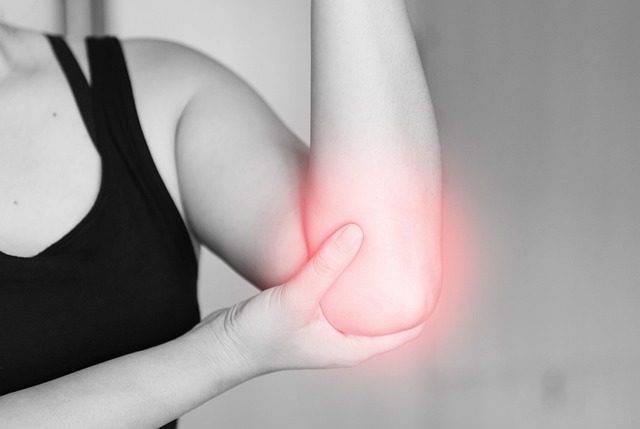PRP therapy for sports injuries leverages an athlete's own blood to accelerate healing and regenerate tissues damaged by overuse. This cutting-edge approach stimulates fibroblasts, enhances angiogenesis, and reduces inflammation, offering a powerful alternative to traditional treatments for conditions like tendinopathy and chronic knee pain, enabling faster recovery and return to competition.
PRP (Platelet-Rich Plasma) therapy is gaining traction as a game-changer in athletic recovery. This natural, patient-derived treatment offers a promising solution for chronic overuse injuries—a prevalent issue among athletes. By harnessing the body’s healing capabilities, PRP accelerates tissue regeneration and supports faster, more effective recovery.
This article explores the science behind PRP therapy, its advantages for sports injuries, and real-life success stories that demonstrate how PRP is revolutionizing athletic performance and well-being.
Understanding PRP Therapy and Its Potential for Athletes
PRP therapy for sports injuries has emerged as a promising treatment option for athletes suffering from chronic overuse issues. This innovative approach leverages the body’s own healing mechanism by utilizing platelet-rich plasma, which is a concentrated solution of growth factors derived from the patient’s blood. These growth factors play a pivotal role in stimulating tissue repair and regeneration, making PRP therapy an attractive alternative to traditional treatments for sports-related injuries.
Athletes often face the challenge of repeated microtrauma due to intense training and competitive demands, leading to chronic conditions like tendinopathy, ligament sprains, and muscle strains. PRP therapy offers a targeted and natural way to accelerate healing, reduce pain, and improve functional recovery. By delivering an abundance of bioactive molecules directly to the affected area, it promotes tissue repair, enhances collagen synthesis, and facilitates the growth of new blood vessels, all of which contribute to faster and more effective healing for athletes with chronic overuse injuries.
Chronic Overuse Injuries: A Common Challenge in Sports
Chronic overuse injuries are a prevalent concern among athletes, often resulting from repetitive micro-traumas that accumulate over time. This type of injury is particularly common in sports that demand high levels of repetition and load on specific joints and muscles. From long-distance runners to swimmers and tennis players, these athletes face the constant risk of developing conditions like tendinopathy, stress fractures, or chronic knee pain. Traditional treatments often include rest, physical therapy, and medication, but for many athletes, these measures fail to provide lasting relief. This is where PRP therapy for sports injuries steps in as a promising solution.
PRP, or Platelet-Rich Plasma, is a natural treatment derived from the athlete’s own blood. It harnesses the body’s healing potential by concentrating growth factors and cells that promote tissue repair. Unlike traditional treatments, PRP offers a more targeted and potent approach to healing chronic overuse injuries. By injecting PRP into the affected area, athletes can potentially speed up recovery, reduce pain, and regain functionality, all while avoiding the side effects associated with corticosteroids or surgical interventions.
How PRP Accelerates Healing and Regenerates Tissues
PRP (Platelet-Rich Plasma) therapy for sports injuries has emerged as a powerful tool in accelerating healing and regenerating damaged tissues. It involves extracting a small sample of an athlete’s blood, processing it to concentrate platelets—which are rich in growth factors—and then injecting this concentrated PRP back into the injured area. These growth factors play a crucial role in stimulating fibroblasts, the cells responsible for collagen production, which is essential for tissue repair and regeneration.
The process of PRP therapy facilitates a faster and more effective healing response by creating an ideal environment for tissue regeneration. The growth factors in PRP promote angiogenesis, the formation of new blood vessels, which enhances oxygen and nutrient delivery to the injured site. This increased blood flow accelerates the body’s natural healing processes, helping athletes recover from chronic overuse injuries more quickly and effectively than traditional treatments alone.
Real-World Success Stories: PRP's Impact on Athletic Performance
In the realm of sports medicine, Platelet-Rich Plasma (PRP) therapy for sports injuries has emerged as a game-changer, fostering recovery and enhancing performance. Numerous real-world success stories attest to its effectiveness in treating chronic overuse injuries common among athletes. For instance, professional runners have found relief from recurring shin splints and improved their speed and endurance after PRP injections, allowing them to return to competition faster and safer.
Similarly, elite basketball players have witnessed a significant reduction in knee pain and swelling, enabling them to maintain their agility and vertical leap. These cases highlight the tangible benefits of PRP therapy, as it accelerates tissue repair, reduces inflammation, and promotes natural healing processes within the body. As a result, athletes can expect better outcomes, quicker return to play, and enhanced overall performance without the significant downtime associated with traditional treatments.
PRP therapy for sports injuries offers a promising solution for athletes suffering from chronic overuse issues. By harnessing the body’s own regenerative capabilities, PRP accelerates healing and promotes tissue regeneration, leading to improved performance and a faster return to competition. Backed by successful real-world applications, this innovative treatment is revolutionizing athletic recovery, providing hope for a healthier and more robust sports landscape.
